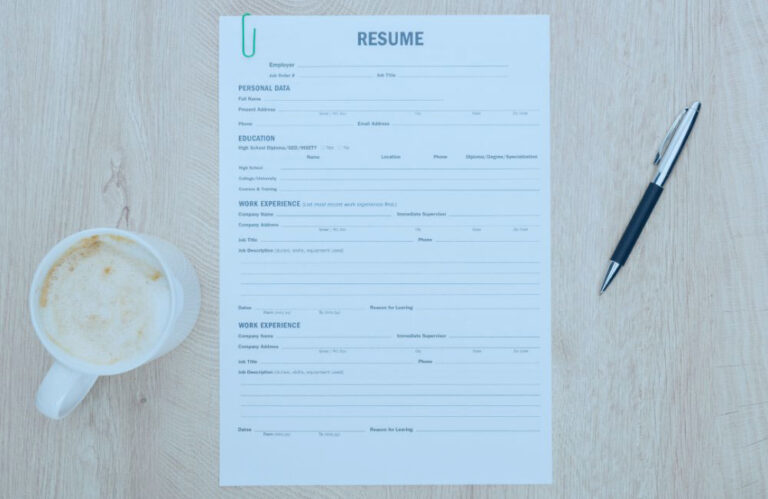How to Answer: “Why Did You Change Your Career Path?
This is a comprehensive guide to effectively answer one of the most common yet complex questions in job interviews following a career switch[1]. A career change can be a pivotal moment in a professional’s life, and explaining it adequately is crucial to convince potential employers of your suitability and commitment to the new career path.
Understanding the Question
When interviewers ask, “Why did you change your career path?”, they are seeking insights into your motivations, adaptability, and commitment. The underlying query is multifaceted and aims to uncover the candidate’s intrinsic and extrinsic motivations for such a significant shift.
Interviewer’s Perspective
From the interviewer’s viewpoint, understanding a candidate’s reason for changing careers helps assess the candidate’s alignment with the company’s goals, culture, and the specific role being applied for. They are keen to discern whether the switch is a well-considered decision and if the candidate possesses the skills and determination to excel in the new field. Employers often reference resources like the Bureau of Labor Statistics[2] to understand workforce trends and use this data in conjunction with your response to gauge the sincerity and practicality of your career change.
Common Concerns Addressed
Interviewers often have reservations regarding the candidate’s stability, consistency, and the transferability of their skills. They want to know if the change was impulsive or a well-thought-out transition. There’s often an implicit concern regarding the candidate’s commitment level to the new career and if they’re likely to switch again. Reading materials on platforms like Forbes[3] can help interviewees understand these concerns from a business perspective, enabling them to tailor their responses accordingly.
Interviewees can mitigate these concerns by offering concrete examples of the transferable skills they bring and demonstrating their commitment to the new career through actions like additional training or certifications, as outlined in resources available on LinkedIn Learning[4].
Additional Information
While not explicitly outlined in your provided headings, it’s also crucial for the candidate to emphasize the positive aspects that prompted the career change, rather than focusing solely on the negatives of the previous career. Whether it was the pursuit of a passion, the desire for greater challenges, or a shift towards a more booming industry, conveying the change positively can reflect well on the candidate’s adaptability and forward-thinking nature. Utilizing resources like Indeed Career Guides[5] can offer insights on effectively communicating these aspects.
In the context of the initial provided headings and structure, this additional information can be woven into the “Preparing Your Answer” and “Structuring Your Response” sections to create a well-rounded, comprehensive, and nuanced response to the “Why did you change your career path?” question.
Preparing Your Answer
Crafting a response to the question, “Why did you change your career path?”, requires both introspection and strategy. Not only should your answer reflect genuine reasons for the switch, but it should also resonate with the prospective employer and position. Here are practical steps to help you articulate a compelling and authentic response.
Self-Reflection
Before addressing the interviewer, it’s vital to be clear within oneself. Take a step back and think about the reasons that instigated the change:
- Passion: Was your change driven by a newfound passion or a latent interest?
- Growth: Did you feel there were limited growth opportunities in your previous role or industry?
- Skill Alignment: Were you not able to leverage your best skills in your former job?
- Work-Life Balance Did you seek a profession that offered better work-life balance or flexible working conditions? Engage in self-assessment exercises, and even consider tools like the Myers-Briggs Type Indicator[6] or the O*NET Interest Profiler[7] provided by the U.S. Department of Labor. These tools can offer insights into how your personality and interests align with your new career.
Aligning with Job Requirements
Once you’ve introspected, it’s time to demonstrate how this career change makes you an ideal fit for the job in question:
- Transferable Skills: Identify skills from your previous career that will be beneficial in your new role. For instance, a former teacher moving into corporate training can highlight skills in instruction, curriculum development, and audience engagement.
- Continuous Learning: Showcase any new courses, certifications, or training you’ve undertaken to bridge the skill gap. Websites like Coursera[8] or edX[9] offer myriad courses that can amplify your proficiency in the new field.
- Relevance of Past Experiences: Draw parallels between past job experiences and how they’ve prepared you for the challenges in the new role. For instance, a former salesperson transitioning into marketing can discuss their firsthand understanding of customer needs and behaviors. Lastly, always keep the job description at hand. Match your skills, experiences, and career change reasons to specific requirements or responsibilities mentioned. Websites like Glassdoor[10] can also give insights into company culture, role expectations, and interview experiences of others, further aiding in your preparation. Remember, the key is to be genuine and show that your career change, far from being a disadvantage, offers a unique blend of skills and experiences that other candidates might not possess.
Structuring Your Response
Effectively communicating the reasons behind your career change requires a structured response that is coherent, concise, and compelling. This section aims to provide you with a template and illustrative examples to ensure that your response leaves a positive impression on the interviewers, addressing their concerns while highlighting your suitability for the role.
Positive Framing
Articulating the reasons behind a career change positively is essential to convey your enthusiasm and readiness for the new role. Focus on the opportunities the change has provided and your proactive steps to adapt:
Enthusiasm for the New Field
: Begin by expressing your enthusiasm for the new industry or role. Be specific about the aspects that excite you. For example, a move from finance to tech could be driven by a fascination for innovative technologies and their impact on everyday lives.
Proactive Learning and Adaptation
Highlight any steps you’ve taken to adapt to the new field, such as acquiring new skills or certifications. Reference authoritative sources like LinkedIn Learning[11] or industry-specific platforms where you’ve enhanced your knowledge.
Voluntary Transition
If applicable, emphasize that the change was voluntary, stemming from a desire for growth and learning, thus negating any assumptions of being forced out of the previous job.
Resources like Harvard Business Review[12] offer extensive materials on positive framing and can be used to refine this aspect of your response.
Skills and Experiences
Integrating your skills and experiences into your response requires careful selection and presentation to demonstrate their relevance to the new role:
Identify Transferable Skills
Pinpoint skills from your previous career that are applicable in the new context. For instance, management skills, problem-solving abilities, and customer service experiences are often highly transferable.
Provide Concrete Examples
Offer specific examples of how you’ve applied these skills effectively in the past. Utilize the STAR (Situation, Task, Action, Result) method to structure your examples for clarity and impact. More on the STAR method can be found on The Balance Careers[13].
Connect to the New Role
Explicitly draw connections between your transferable skills and the requirements of the new role. Use the job description as a guide and align each skill with a specific job requirement, demonstrating your readiness and fit for the position.
Additionally, utilize platforms like Indeed[14] for insights and examples on effectively showcasing skills and experiences during job interviews. Each response should be tailored to the specific job and company, underscoring your suitability and enthusiasm for the role and organization.
Addressing Concerns Proactively
Proactively addressing an employer’s concerns during a job interview is a strategic move. For those who have changed career paths, assuaging any anxieties or reservations the employer might have is paramount. Here, we explore actionable steps to demonstrate reliability and adaptability, two core attributes that employers often seek reassurance on in such scenarios.
Reliability
Employers may have reservations about your consistency and long-term commitment to the new field. It’s crucial to:
Express Clear Intentions
Be clear about your intention to stay and grow within the new field. Anchor your narrative in specific aspects that drew you to the change, illustrating a well-considered decision.
Provide Evidence of Commitment
Highlight any investments you’ve made to transition effectively, such as pursuing further education or gaining relevant certifications. Utilize platforms like Udemy[15] or academic institutions’ websites to showcase your efforts.
Reference Past Loyalty
Use your employment history to exhibit your loyalty and commitment. If applicable, emphasize periods of stability in your previous roles, which can be corroborated via LinkedIn[16].
Referencing materials and data, such as retention rates and industry transition trends from reputable sources like the Bureau of Labor Statistics[17] can also provide a contextual backdrop to your personal narrative, showcasing your change as aligned with broader trends.
Adaptability
Adaptability is about proving that you’re not just committed but also capable of excelling in a new environment:
Showcase Learning Agility
Emphasize your ability to learn and adapt quickly, offering examples from your previous career where you mastered new skills or adapted to changes effectively. Tools like Korn Ferry’s Learning Agility Assessments[18] can be instrumental in quantifying this trait.
Highlight Versatile Skills
Identify and focus on skills that are highly transferable and valued in multiple industries. Point out instances where these skills were applied successfully in different contexts.
Emphasize Problem Solving
Demonstrate your ability to think critically and solve problems, aligning this with the challenges in the new career. Resources from Critical Thinking Web[19] can help hone and articulate this skill effectively.
By addressing these concerns head-on and offering evidence of your reliability and adaptability, you can turn potential weaknesses into strengths, positioning your career switch as a value-add rather than a risk for prospective employers.
Example Answers
Providing concrete and well-articulated examples is pivotal to comprehending how to adeptly address questions related to a career change during interviews. Here, two scenarios are explored: a change in industry and a change in role, with annotated sample answers to offer insights and guidance.
Industry Change
For individuals who have transitioned across industries, it’s critical to bridge the apparent disconnect and present this shift as a strength. Below is an example:
*”I spent a decade in the financial services sector, primarily in a role that involved analyzing data trends to optimize investment strategies[20] While I was successful and enjoyed the work, I realized my passion leaned more towards leveraging data to solve real-world problems directly impacting communities. This epiphany led me to transition to the healthcare sector.
I took the initiative to upskill, completing a comprehensive course on healthcare analytics from Coursera[21]. My ability to interpret complex data and transform it into actionable insights is a skill I carried from my previous role. Now, I’m eager to apply this expertise to contribute to data-driven healthcare solutions that have tangible impacts on people’s well-being.”*
Annotations: In this response, the candidate effectively combines an explanation of their reason for the industry change (passion for impacting communities) with evidence of their commitment (upskilling) and transferable skills (data analysis).
Role Change
When changing roles, especially within the same industry, focusing on the evolution of skills and interests is key. Here’s an example response:
*”In my five years as a software developer[22] at XYZ Corp, I honed my skills in coding, problem-solving, and innovation. However, I always had a penchant for connecting the technical aspects of our work with business solutions, evident from my proactive involvement in client interactions and solution presentations.
Recognizing this, I pursued an MBA to deepen my understanding of business strategy. Now, as I transition[23]into a product management role, I bring a blend of technical expertise and business acumen. I am equipped to bridge the gap between technical teams and business stakeholders, ensuring that our products not only are technically sound but also align with market needs and deliver value to the customers and the business.
Annotations: The candidate focuses on the natural evolution of their skills and interests, and underscores their proactive steps to prepare for the new role, effectively allaying concerns about their readiness and fit.
Both examples are rooted in authenticity, address the underlying concerns about the candidate’s commitment and adaptability, and demonstrate a clear connection between past experiences and future roles, turning the career change into an asset rather than a liability.
Concluding Thoughts
Navigating questions about a career change in interviews requires a blend of self-awareness, preparation, and communication skills. Ensuring your response is structured, authentic, and addresses potential employer concerns is pivotal. Below are concluding insights and tips to encapsulate your career change narrative effectively, showcasing it as an asset rather than a hurdle.
Do’s and Don’ts
Navigating this sensitive terrain involves adhering to some best practices while avoiding common pitfalls.
Do’s
Be Honest
Always be truthful about your reasons for changing careers. Authenticity resonates and is easily detectable. Reference credible sources like your LinkedIn profile[24] for consistency in your career narrative.
Focus on the Positive
Emphasize the positive aspects and learnings from your previous career and how they’ve positioned you uniquely for the new role, as suggested by career guides on platforms like Indeed[25].
Show Commitment
Highlight steps you’ve taken to transition effectively, like upskilling or obtaining relevant certifications from recognized platforms like Coursera[26].
Avoid Negativity
Refrain from speaking negatively about your previous industry, company, or colleagues. Maintain a professional tone as outlined in various professional etiquette guides like those available on Forbes[27].
Skip Preparation
Do not wing it. Be prepared to address the change comprehensively and coherently. Use resources like Glassdoor[28] to anticipate questions and prepare accordingly.
Don’t
Ignore the Job Description
Every response should be tailored to align with the specific role and company you’re interviewing for.
Practice Makes Perfect
The adage, “practice makes perfect,” holds in this context. Rehearsing your response ensures that it’s articulated confidently and naturally.
Mock Interviews
Engage in mock interviews to refine your response. Use platforms like InterviewBuddy[29] for real-time practice with professionals.
Feedback Loop
Seek feedback and make necessary adjustments. Utilize resources like Toastmasters[30] to improve communication and presentation skills.
Body Language and Tone
Pay attention to non-verbal cues. Resources on TED Talks[31] offer insights on effective body language during communications.
In summary, addressing a career change in interviews is about painting a narrative of growth, adaptability, and value addition. Be prepared, be positive, and turn the perceived challenge into an opportunity to showcase your diverse skill set and enriched perspective. Your career journey, with its twists and turns, is a testament to your evolution as a professional, and articulating this effectively can set you apart in the competitive job market.







